In the late afternoon of July 13, 2017, Sindiso Magaqa parked his black Mercedes M-Class at a local corner shop on the outskirts of Ibisi, a small village of brick bungalows clustered amid the rolling emerald hills of South Africa’s KwaZulu-Natal Province, often referred to as the “garden province.”
35-year-old Magaqa and two colleagues, all elected councilors in the local Umzimkhulu Municipality, were on their way home from a political meeting in the nearby town of Kokstad. The week was almost over and the mood was light. The three councilors, who were all close friends, had stopped to buy snacks and drinks before heading to another friend’s birthday party nearby.
As they cracked jokes and laughed together in the car, two men in balaclavas stepped out of a red BMW with tinted windows on the other side of the road, brandishing AK-47s. Magaqa clocked the situation before the others—he knew there were people who wanted him dead.
“Be quiet. Don’t move. Don’t get out of the car. Things are bad. We are about to be shot,” he hissed to his passengers in a staccato burst, before a volley of gunfire rang out.
More than two dozen bullets ripped through the chassis of Magaqa’s vehicle, most of them aimed at the front door on the driver’s side where he was seated. Onlookers scattered or dove to the ground.
Sitting in the back of the car, Jabulile Msiya closed her eyes, prayed, and waited for it to all be over. She was sure they were all going to die. As the seconds became minutes and the shooting continued, she wondered if she was already dead.
Then suddenly, everything was quiet. Msiya opened her eyes and found that she was still alive, though she’d sustained a gunshot wound to her right shin and another bullet had grazed the side of her left calf. Her other colleague had also been hit in the leg and the hip, but was still conscious. In the driver’s seat, Magaqa was unconscious and bleeding heavily from multiple wounds to his lower body. It was clear he’d been the primary target of the attack.
Msiya and her colleague managed to drive their wounded friend the short distance to Umzimkhulu’s central hospital. Once Magaqa had been stabilized, his family swiftly had him transferred to Durban, KwaZulu-Natal’s economic capital. As long as Magaqa was in Umzimkhulu, they were afraid the hitmen might find a way to get past the hospital’s limited security and finish him off.
But their efforts would ultimately prove futile. Magaqa succumbed to heart failure two months later. An initial toxicology report suggested that his demise was linked to complications from his wounds, though there are persistent rumors in Umzimkhulu that he was poisoned in hospital.
Whichever is true, Magaqa’s name has been added to a growing list of assassination victims, in a place where politics is proving an increasingly deadly game: at least eight municipal officials have been killed in Umzimkhulu since the beginning of 2017. As such, the town has come to serve as a microcosm of an increasingly fragmented political landscape in a province with a long and brutal history of violence.
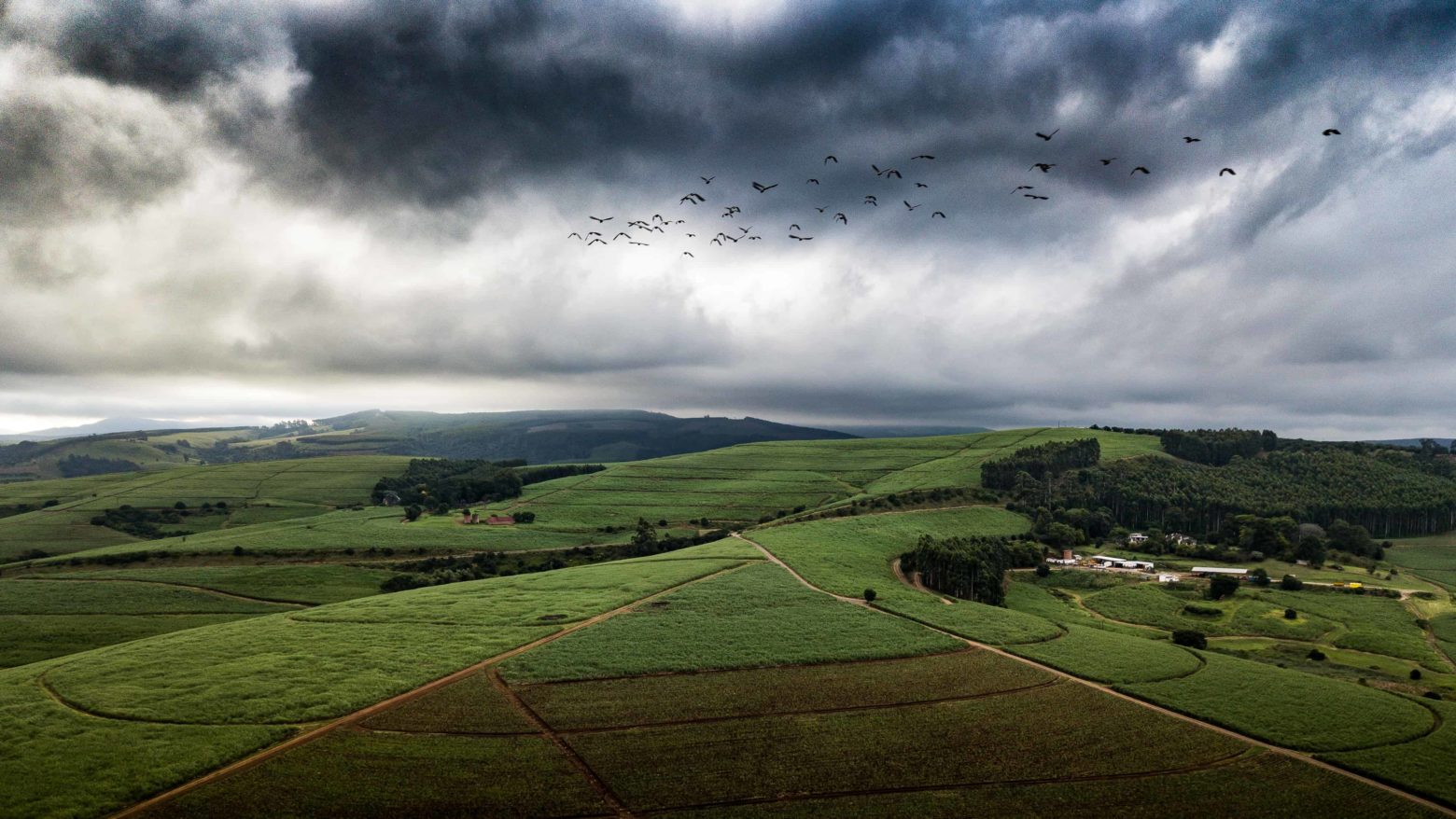
On a hot afternoon at the beginning of March of this year, I met Msiya at her home, perched on a steep hillside overlooking the town of Umzimkhulu, the sprawling farms that surround it, and the river from which it takes its name.
The 45-year-old is a former secondary school teacher and dogged grassroots campaigner for better state schools and public services. She was inaugurated as a councilor for her third straight term after local municipal elections in 2016. She won 82 percent of votes in the small ward in which she lives, which comprises approximately 9,000 residents with a median age of just 22.
Msiya was small and soft-spoken, but had an air of self-assurance about her. Her long dreadlocks were tied back in a tight bun to reveal a striking face and prominent cheekbones. Two of the four children she raises as a single mother, as well as the bodyguard appointed to her since Magaqa’s death, were watching television together in the lounge.
Msiya stepped outside to point out an imposing concrete building just down the hill from her house. “This is the house Magaqa was building for his family. We were going to be neighbors,” she said. Instead, with the construction work now abandoned indefinitely, the unfinished grey shell served as a reminder both of Magaqa’s premature death and the constant threat that local political figures face.
A former secretary general of the African National Congress (ANC) Youth League—the youth wing of South Africa’s ruling party—and a close friend of firebrand opposition leader Julius Malema, Magaqa was seen as a rising star in local politics. His vigorous egalitarianism resonated with working-class black South Africans. Msiya believes that he was killed for his strong stance against corruption in an area where graft is both commonplace and highly lucrative.
“He would fight against anything that was not right, that was against the principles of the municipality,” she said.
Magaqa’s principles were founded on his strong Christian faith. Like a pastor, he was known to routinely preach the gospel to reinforce his stance on any subject. Ephesians 5:11 was an apt favorite: “Take no part in the unfruitful works of darkness, but instead expose them.”
Msiya claims that the person who ordered the hit on Magaqa works side-by-side with her in the municipality, but she is afraid to name them or provide further details for fear of reprisal, particularly as there have been no arrests in connection with last year’s spate of murders.
Meanwhile, there are still vacant political offices within Umzimkhulu Municipality. Two opposing factions have emerged, with diverging views as to who should fill the posts, mirroring wider divisions within the ANC between supporters of schismatic former president and party leader Jacob Zuma and his successor Cyril Ramaphosa. With new officials due to be sworn in soon, Msiya fears that more violence is on the horizon. As South Africa approaches much-anticipated general elections in 2019, such sentiments are widely shared.
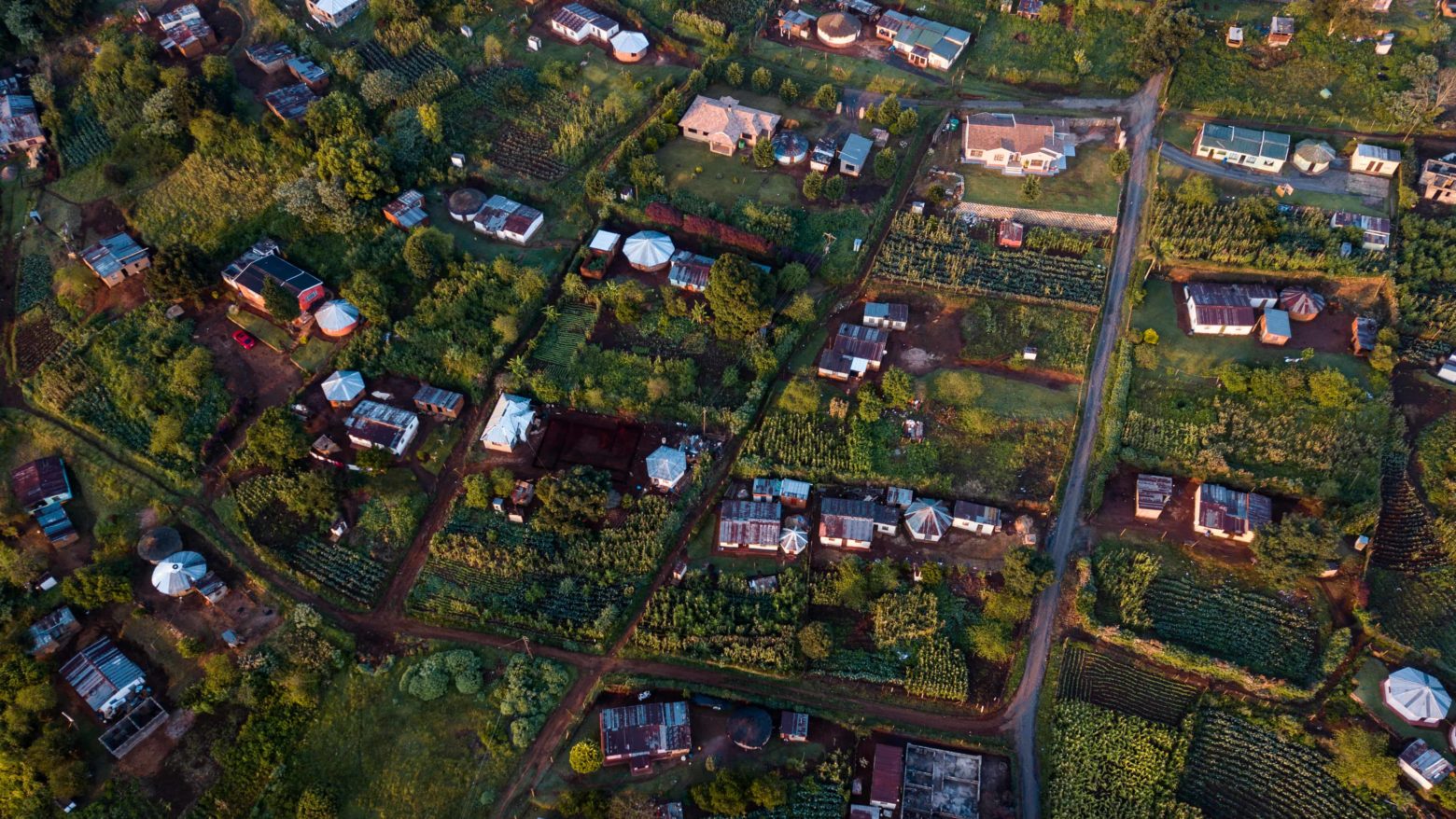
At surface level, the violence is often a result of contestation over scarce resources and limited opportunities for socioeconomic advancement in poor and largely underdeveloped parts of South Africa, rather than divergent political views. In Umzimkhulu, for example, unemployment hovers at approximately 50 percent, while the local municipality is the main source of employment, providing jobs to roughly 21 percent of the population. A government contract or post can therefore provide a rare conduit to financial security for entire extended families.
But the extent and mercilessness of the killing in contemporary KwaZulu-Natal must also be viewed within the context of a long history of political violence and rupture that stretches back to the blood-soaked final throes of apartheid.
Since South Africa’s first democratic elections in 1994, when Nelson Mandela was elected president, there have been more than 500 political assassinations in KwaZulu-Natal. Independent crime researcher David Bruce estimated in 2013 that the province had accounted for more than 90 percent of political killings countrywide since the dawn of democracy. The numbers could well be much higher—political motive can be hard to prove.
Statistics also seem to suggest there has been a marked spike in the frequency of killings since the run-up to the contentious and hotly contested 2016 local government elections. Since the beginning of 2018, the ANC and its minister of police, Bheki Cele, have repeatedly renewed promises that they are clamping down on the issue. At a press briefing in early August, Cele claimed that a newly appointed team of crime experts was making major inroads.
But such rhetoric hasn’t stopped roughly 10 politically-linked murders from being carried out already this year, including that of an ANC Youth League leader in KwaZulu-Natal who was gunned down on July 21. In another recent instance, on Friday, May 11, an ANC activist and an opposition councilor were killed in separate hits that took place within twenty minutes of each other, a few hundred kilometers apart.
In 2017, the ANC’s former treasurer general, Mathews Phosa, warned that there were signs the unrestrained violence in KwaZulu-Natal was spreading to other South African provinces, including Mpumalanga, North West, and the Eastern Cape. A recent report from the Centre for Risk Analysis also forecast that it was only a matter of time before this phenomenon reached the “upper echelons of power” within national government.
In the late 80s and early 90s, thousands died across modern day KwaZulu-Natal in violent clashes between paramilitary structures of the ANC liberation movement and Inkatha, a socially conservative Zulu nationalist organization led by an ANC turncoat named Mangosuthu Buthelezi. The organization later became known as the Inkatha Freedom Party (IFP).
Inkatha was backed by the security forces of the white supremacist apartheid government, and by pliable traditional authorities whom the state had installed to preside over partially self-governed ethnic “homelands.” Buthelezi, who was chief minister of the so-called KwaZulu homeland, feared that the ANC’s desire to do away with divisive ethnic politics would erode his hold on power and privilege in the region, which largely depended on the apartheid government’s support. When Buthelezi tried to forcibly repress growing public opposition to the homeland regimes, he was branded as a counter-revolutionary by the ANC.
As the ANC-Inkatha relationship deteriorated, many observers feared full-scale civil war. In 1995, as Buthelezi’s recently formed IFP clamored for greater autonomy from the newly installed ANC government, Nelson Mandela felt compelled to call for United Nations intervention. The South African army was also deployed to various “flashpoints” to try to mitigate the violence.
Today, with the IFP now rendered largely irrelevant in KwaZulu-Natal, the violence has become overwhelmingly characterized by conflicts and power struggles between intra-ANC factions. All of the councilors killed in Umzimkhulu, including Magaqa, were devoted ANC members.
Richard Pithouse, a South African academic and journalist who has been writing about political violence in KwaZulu-Natal since 2001, told me that this evolution from inter- to intra-party conflict is strongly linked to certain “central protagonists” in the apartheid-era violence, who went on to become important post-apartheid actors within the ANC. “The political formation of these figures was fundamentally shaped by the civil war in the province,” Pithouse adds.
A former Inkatha military leader called John Mchunu came to play a particularly prominent role in the violent political evolution of the ANC in KwaZulu-Natal. Mchunu had joined the party in the early 1990s, along with many other Inkatha members, as the apartheid state crumbled and an ANC-led government became its most likely and legitimate successor. Mchunu went on to become a leading regional figure and a key mobilizer for the 2009 election of Jacob Zuma.
Pithouse has written that Mchunu and other former IFP members who united in support of Zuma brought a “politically authoritarian, socially conservative, and acutely patriarchal” nationalist aspect to the forefront of the ruling party. This has often afforded scant tolerance for dissenting voices not only outside of party ranks, but firmly within them.
By the time Mchunu died in 2010, he was also widely alleged to have helped establish a powerful system of economic and political patronage in KwaZulu-Natal that was consolidated through strong links to organized crime.
All of this has provided fertile ground for the ongoing militarization of politics in the province, and inculcated a culture of political assassination. As a result, today’s ANC essentially finds itself “caught between the world of armed struggle and formal democracy,” according to political commentator Gareth van Onselen. “At the local government level, democratic choice and death often sit side by side.”
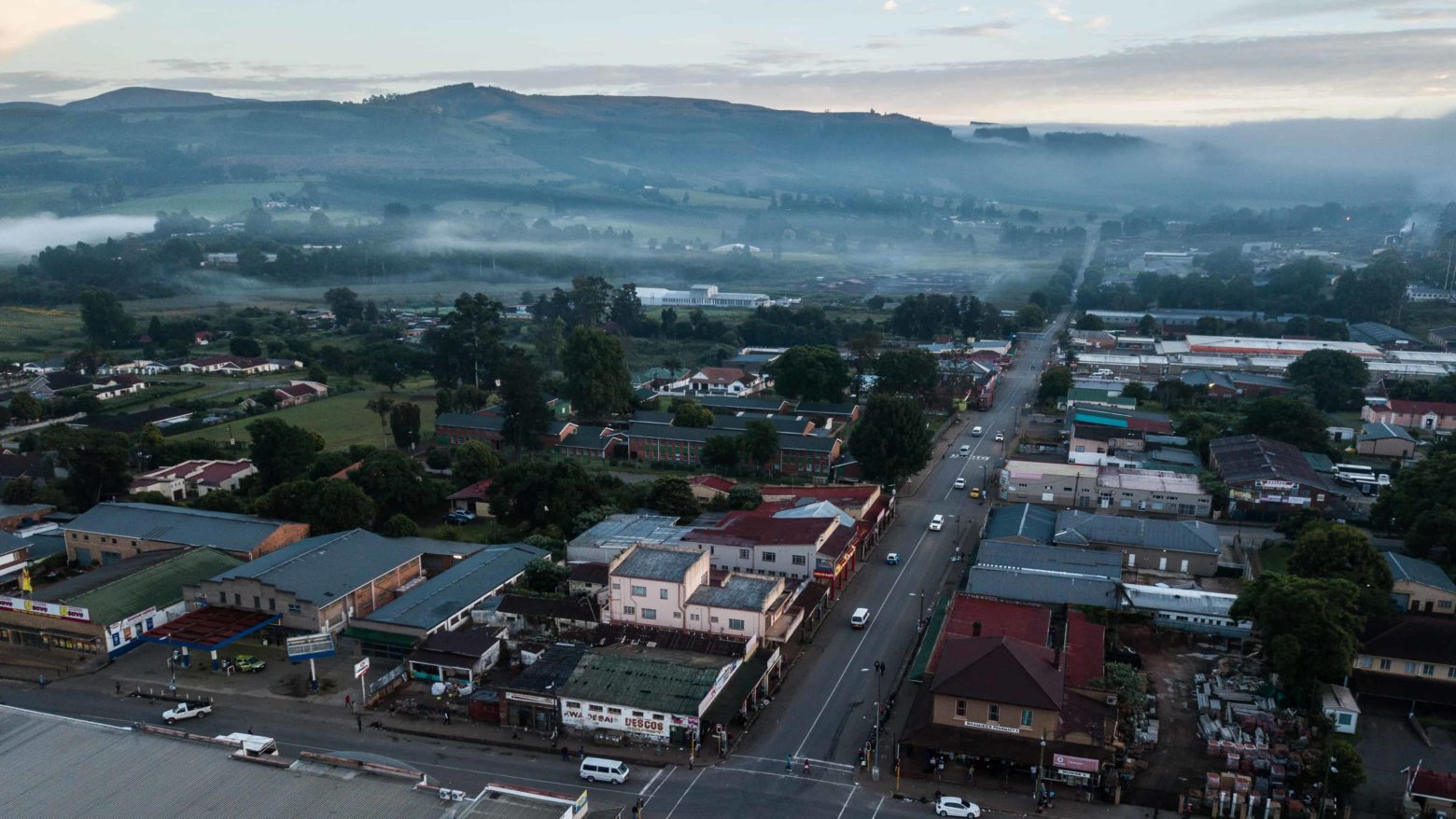
About two hours’ drive to the northeast of Umzimkhulu, the picturesque farming town of Richmond sits in a verdant valley surrounded by undulating fields of sugar cane and plantations of towering eucalyptus and pine trees. With early morning mist still hanging over the town, groups of men and women from the poor surrounding townships—formerly designated as black-only areas under apartheid’s segregationist Group Areas Act—wait beside Richmond’s main thoroughfare to be ferried to work in overcrowded flatbed trucks.
At this crepuscular hour, a solitary bulb casts a sterile light over the front door of Thandazile Phoswa’s former home. Located at the very top of the hillside township of Ndaleni, the whitewashed bungalow boasts panoramic views of Richmond and the surrounding hills, but they’re somewhat spoiled by the jagged razor wire that’s been wrapped around its perimeter.
The house, which currently stands empty, serves as a macabre monument to Richmond’s long history of political violence, and that violence’s intergenerational impact.
In 1997, Phoswa’s mother and father, as well as two of her younger siblings, were slain in front of her in their home, during an outbreak of violence between the ANC and a nascent opposition party called the United Democratic Movement (UDM). Phoswa was 17 years old at the time. She’d already lost an uncle and an aunt in a previous burst of fighting between Inkatha and the ANC in 1991, which claimed more than 100 lives in Richmond in less than six months. Another 120 people would die between 1997 and 1999.
Then, late one night in April last year, 37-year-old Phoswa—a staunch ANC loyalist and Richmond’s deputy mayor—was shot in the head in the same living room where she had watched her parents die.
She became the second of three ANC political figures killed in Richmond in less than three months. This followed two similar murders in late 2016, raising concerns that history was repeating itself in an area once considered the epicenter of KwaZulu-Natal’s so-called “killing fields.”
Andrew Ragavaloo was the town’s mayor at the height of the violence in the late 90s between the ruling party and the UDM, which was led by notorious warlord and disgraced former ANC figure Sifiso Nkabinde. Many Richmond locals told me that Ragavaloo must have lived a charmed life to still be alive today.
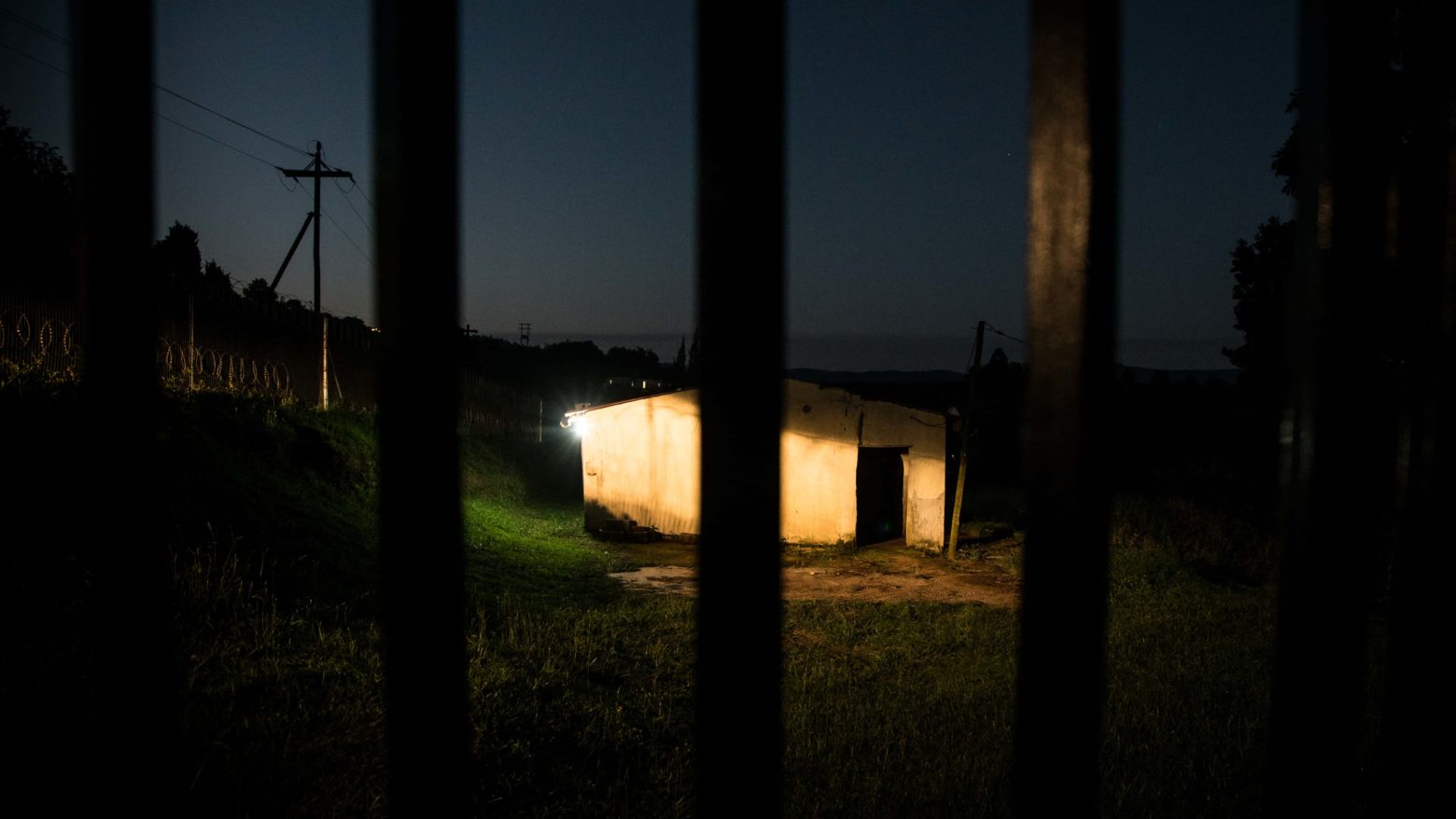
Most of Ragavaloo’s closest political comrades were not so lucky, including his brother-in-law and former deputy, Rodney van der Byl, who was shot 27 times outside his home in May 1997. Nkabinde eventually shared a similar fate—more than 80 high-velocity rounds tore into his body as he was leaving a local supermarket on January 23, 1999.
In 2008, Ragavaloo published a compelling and rather lurid book based on the diaries he’d kept during this period, when he was essentially forced to live under self-imposed house arrest, with at least six police officers permanently stationed at his home.
Detailing the moments after van der Beyl’s death, Ragavaloo writes: “I slowly took in the scene before my eyes. I felt detached from reality, as if I was part of a horrible dream. Rodney lay sprawled, arms stretched out. His glasses were off his face, missing. Holes the size of hailstones had seeped thick, life-preserving blood. His face was contorted in pain or shock.”
I met Ragavaloo in an air conditioned office at the Richmond Traffic Department, where his son Dwayne is the managing officer. Ragavaloo has a broad nose, a crooked smile, and a booming voice. He’s a keen orator and likes to expound on Richmond’s complex history in long monologues. “Richmond is what I always refer to as a dormant volcano,” he told me. “Things bubble away beneath the surface for a long time, until suddenly it just explodes.”
Though Ragavaloo—now sixty-seven years old—retired in 2016, he continues to keep his finger firmly on the pulse of local politics. He believes that Richmond’s violent past still plays a role in the more recent politically-linked assassinations.
“That history is still with us, because there’s a lot of anger and resentment amongst those victims and the families. They never received any sort of counseling or reconciliation. Homes were burnt down and never replaced. Entire families were wiped out. It was complete overkill. During that time, you could buy an AK-47 for about R50 (less than $5)—that’s how cheaply life in Richmond was regarded,” he said.
Many of those weapons had passed through the porous borders of neighboring Cold War proxies, including Mozambique and Angola, where US-backed armies had been fighting protracted civil wars against socialist opposition groups supported by Russian firepower, and against Cuban ground troops in Angola. Other weapons had been supplied to Inkatha directly by the apartheid security forces, as well as by right wing white supremacist paramilitary groups who were opposed to the burgeoning majority black ANC liberation movement.
According to Ragavaloo, most of these weapons were never accounted for during the post-apartheid disarmament and demilitarization process that began in 1995. He said that many remain in circulation and are still routinely used in contract killings. Other residents told me that countless Cold War-era firearms were simply buried in locals’ backyards or hidden in caves and forests outside of town, in case the time came when they’d be needed again.
When I left Ragavaloo, I drove up the hill to Ndaleni to meet Thandazile Phoswa’s uncle, Ulwazo, at his home once he’d finished work. After shaking my hand and welcoming me into the lounge, Ulwazo unclipped a holster containing a 9mm pistol from his belt and handed it to his wife to put away in a drawer in the kitchen.
A similar pistol was used to kill Ulwazo’s niece. It was registered to Phoswa’s boyfriend, a private bodyguard named Samkelo Chili. Though Chili was placed at the scene of Phoswa’s death by a number of witnesses, he claimed that Phoswa had taken his firearm and shot herself in the head.
Chili was charged with contravention of the Firearms Act for failure to lock his gun in a safe. But murder charges against him were dropped in late April 2017 due to insufficient evidence, prompting violent protests by local ANC supporters outside Richmond Magistrate’s Court.
Ulwazo, who raised Phoswa after her parents’ death, rubbished claims that she would have shot herself, saying that it would have gone against both her strong Christian values and her political ambitions. He also dismissed rumors that her death was the result of a “lovers’ quarrel,” as suggested by some tabloids at the time. He believes that Chili, whom Phoswa had been dating for just three months, was “deployed” to carry out a hit on her.
“Some days before she passed away, she told the family that she knew there were some people who wanted to kill her, but she didn’t know who or why,” Ulwazo told me. “We advised her to leave town for a while and go somewhere safe, but she refused.”
When I asked Ulwazo and his wife what kind of a person Phoswa was, they both laughed for a good five seconds. “What I can say is that she was a very straight person—a straight talker. She didn’t tolerate any nonsense,” Ulwazo eventually said with a wry smile that suggested Phoswa could be a handful. “She was always fighting for the community, fighting for service delivery. She was a leader. She was a very strong woman.”
A local ANC councilor who spoke to me on condition of anonymity said that Phoswa was rumored to know who was responsible for the murder of Richmond’s former municipal manager, S’bu Sithole, and was intending to speak out. Sithole was shot dead about a month before Phoswa.
The councilor also suggested that Ragavaloo was in some way connected to both these murders. He alleged there had been an argument between Ragavaloo and Sithole while Ragavaloo was still mayor, over the awarding of a municipal electrical contract to a service provider that Sithole felt had dubious credentials. After Sithole’s murder, the councilor claims that Ragavaloo became a silent partner in this company.
“Ragavaloo is a very intelligent person, but he’s also a very dangerous person. All of these bad stories in Richmond are attached to him in some way. But you never know how he gets away with it,” the councilor told me.
Another of the 2017 murders also fits the pattern described by the councilor. Sifiso Mkhize, shot 18 times on his way home from a community policing meeting, had only recently entered the political fray after previously serving as Ragavaloo’s personal bodyguard.
Mthulisi Ngcobo, the municipality’s former head of security, who was shot dead outside his home in Ndaleni in late 2015, worked with Dwayne Ragavaloo. Dwayne also faced murder charges after shooting a man to death in a Richmond tavern in 1999—he claimed to have acted in self-defense and was later acquitted. That same year, two of Ragavaloo’s former bodyguards had been involved in the assassination of his nemesis, Nkabinde.
A number of other Richmond residents that I spoke to shared the councilor’s sentiment that neither Ragavaloo nor his son were to be trifled with. Most were too afraid to speak about this on the record. One resident believed that Ragavaloo used his book to distance himself from Richmond’s history of violence, paint Nkabinde as the sole villain, and claim the moral high ground. But wider scrutiny of the period reveals that remarkably few political figures escaped without any blood on their hands. Was Ragavaloo one of them?
Ragavaloo is candid about his personal connections to both some of the victims and the perpetrators of violence in Richmond, but flatly refutes claims that he is in any way implicated in murder. “If it wasn’t such a serious situation in that many people died, I’d treat it as a joke, a bit of twisted humor,” he told me over the phone recently. He claimed that people were “grasping at straws to deflect from the real situation.”
At the time of writing, Phoswa’s boyfriend remains the only suspect to have been arrested in the latest spate of violence in Richmond, and all of the cases remain open. History certainly doesn’t inspire confidence that they’ll yield results—only 21 of the 120 murders in the late 1990s saw convictions, and 11 of those were from a single crime scene.
The persistent problem of unsolved crimes, coupled with the substantial cache of illegal weapons still in circulation in the area, has contributed to a pervasive and disconcertingly palpable climate of fear and suspicion. As one local traffic officer I spoke to put it, “You can’t move here without looking over your shoulder.”
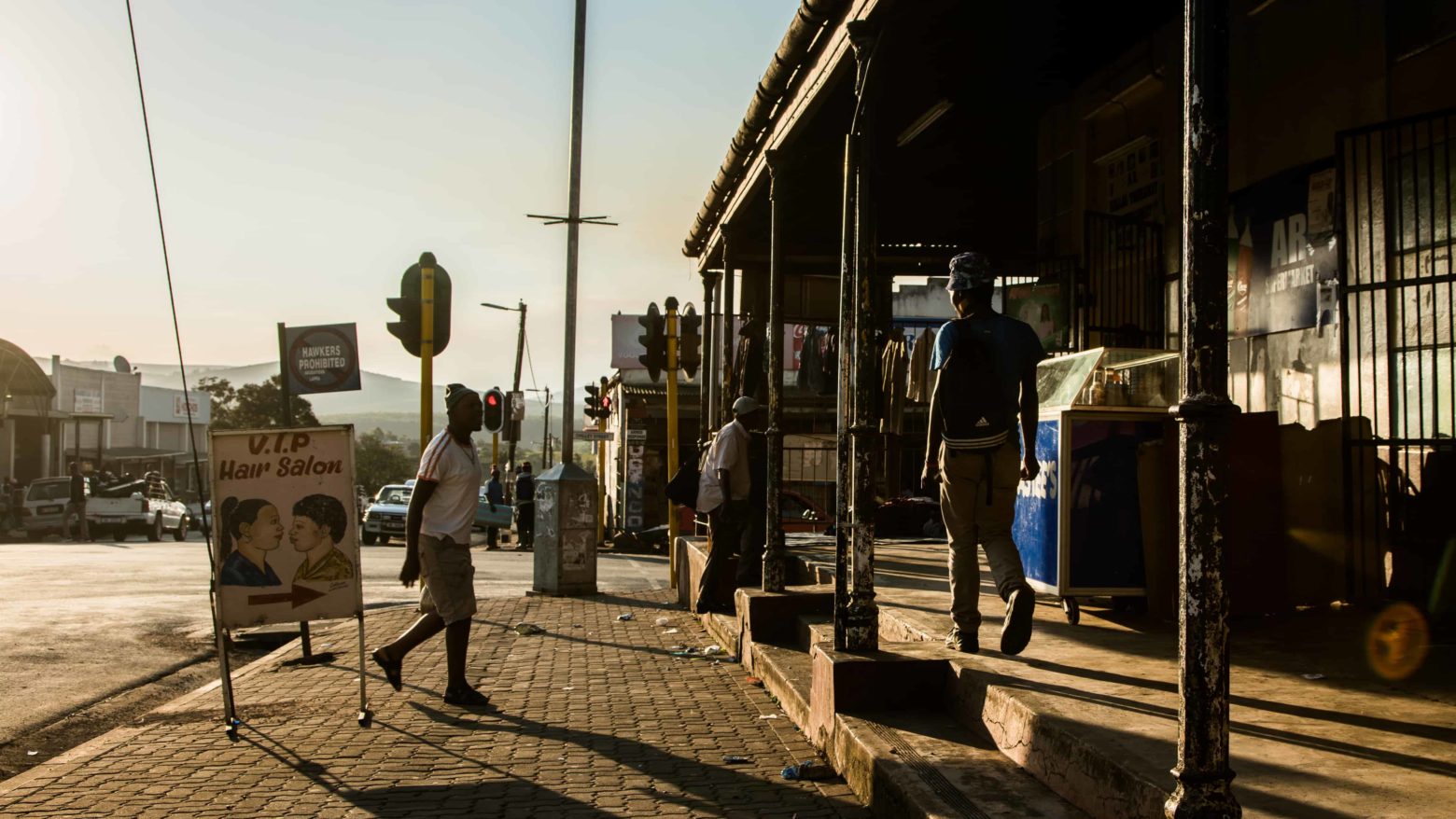
On my last day in Richmond, I met David*, a quick-witted 24-year-old with a long, handsome face, who sleeps on the streets of the town’s run-down central business district. Both David’s parents died when he was young, and he is unemployed. His sister, a local journalist who had tried to expose Richmond’s more unsavory facets, was forced to flee town after a barrage of death threats in 2014.
David had no choice but to join the many young homeless men looking for food and small change in the vicinity of Richmond’s garbage-strewn central taxi rank or the local KFC. He permanently carried his dog-eared high school matriculation certificate around with him, in case a serendipitous job opportunity arose.
David told me he often found it difficult to sleep out on the streets, so he’d unwittingly been privy to secrets that were most commonly revealed under the cover of darkness. “You won’t believe what goes on here,” he said. Fearing the potential risks of sharing such information, David insisted that we find a quiet spot on the side of the road outside of town. Once I’d parked and turned off the engine, he began to reel off the details of a number of disappearances and plots that he’d caught wind of. As he spoke, his eyes followed the cars that intermittently sped along the road beside us.
In the weeks leading up to Phoswa’s death, David claimed he’d often seen her boyfriend drinking with a notorious local hitman and minibus taxi boss known as Crew Ngcube. David spoke about Ngcube as if he was a nightmarish specter: “Everyone is afraid of him. Even if you just say his name you become afraid.”
David told me that he’d always dreamt of becoming a lawyer—a dream that derived in part from his deep frustration with the injustice he witnessed on a daily basis in Richmond, and the toothless efforts of a local police department that he believed was complicit in the violence. “No one will be held responsible for all this killing,” he said “That’s what upsets me the most.”
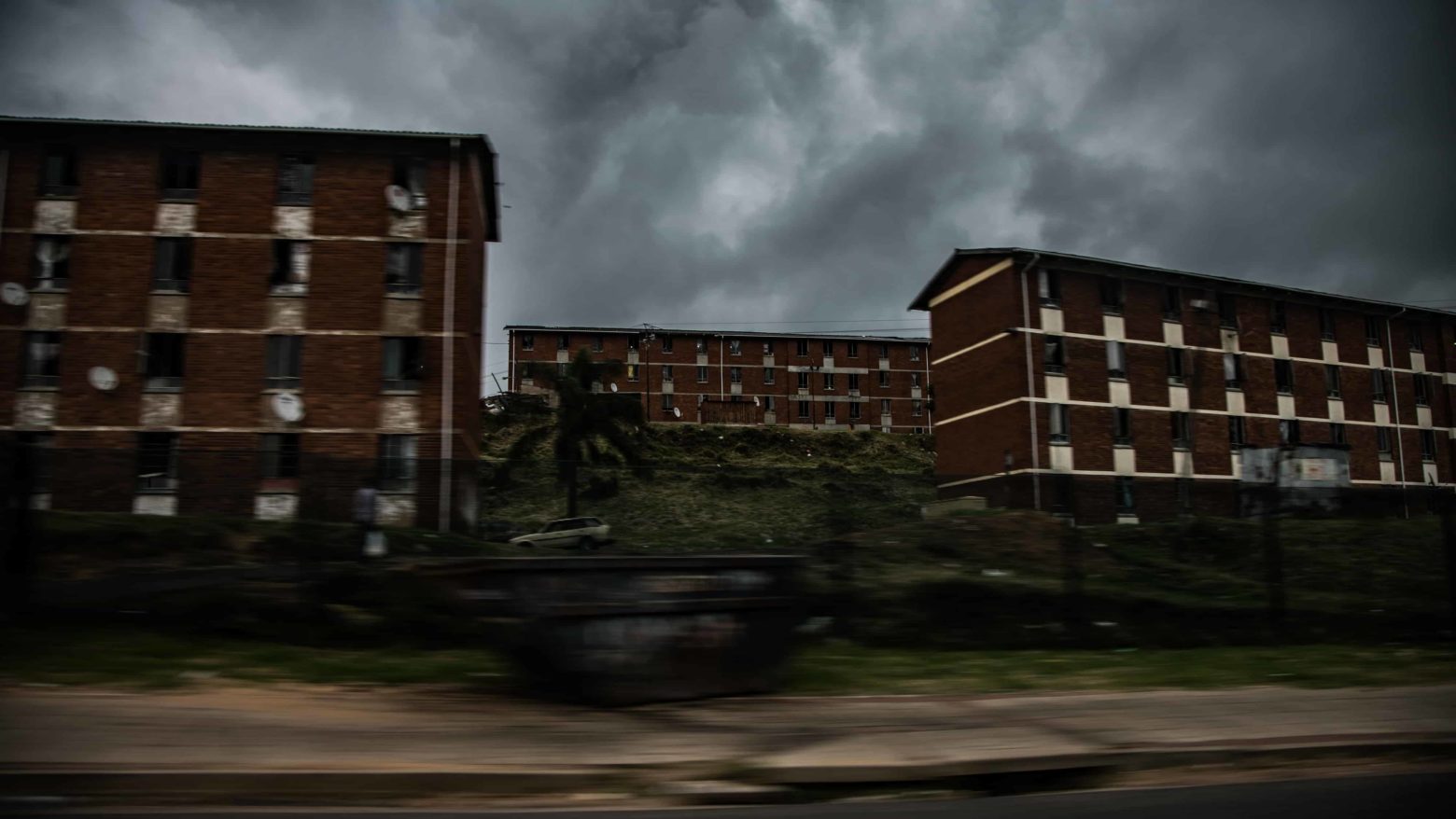
In October 2016, KwaZulu-Natal Premier Willies Mchunu established the Moerane Commission of Inquiry to investigate the wave of killings. After more than a year of public hearings and numerous delays, the commission submitted its final report in June; the report was tabled in a closed meeting at the KwaZulu-Natal legislature in early August. While the Premier’s office has promised to release the report to the public by September, there is concern among civil society organisations that certain information will be withheld.
The towns of Richmond and Umzimkhulu both featured heavily in the hearings, with Msiya among those who gave witness testimony. Some in her position were not so outspoken, and their fears were certainly not misguided. In November, local authorities learned of a plan to assassinate a local official who had testified.
De Haas alleged that the assassins hired to carry out the hit on Thabiso Zulu were from Glebelands Hostel, a notoriously violent precinct of cramped and dilapidated red-brick tower blocks on the fringes of Durban.
Glebelands has been described by Durban-based independent activist Vanessa Burger as a “reservoir of hitmen.” She claims that many of the hits carried out on ANC councilors across the province—including Magaqa—can be traced back to Glebelands.
But close to 100 murders have also occurred within Glebelands itself since early 2014, in what Burger calls a “small-scale civil war.” Themba Pina, a respected community leader, was one of 13 residents murdered in less than four months as violence in the hostel neared its zenith in mid-2015. He was shot in the head in broad daylight, on his way to work at a butchery not far from the hostel.
Burger has meticulously documented every death that has occurred in Glebelands over the past four years. Her list shows that the majority of the murder victims have been block committee members, appointed by the municipality to help control the allocation of rooms.
Burger says a number of block committee members had become embroiled in a disagreement with local ANC councilor Robert Mzobe. The councilor had been widely accused of dividing the community, by illegally evicting residents and not consulting them on developments in the area. Many Glebelands residents claim that two ANC factions soon developed within the hostel—one that supported Mzobe, and one that opposed him. They say this was the genesis of the ensuing slaughter. Mzobe couldn’t be reached for comment on this story, but in the past he has repeatedly denied any wrongdoing.
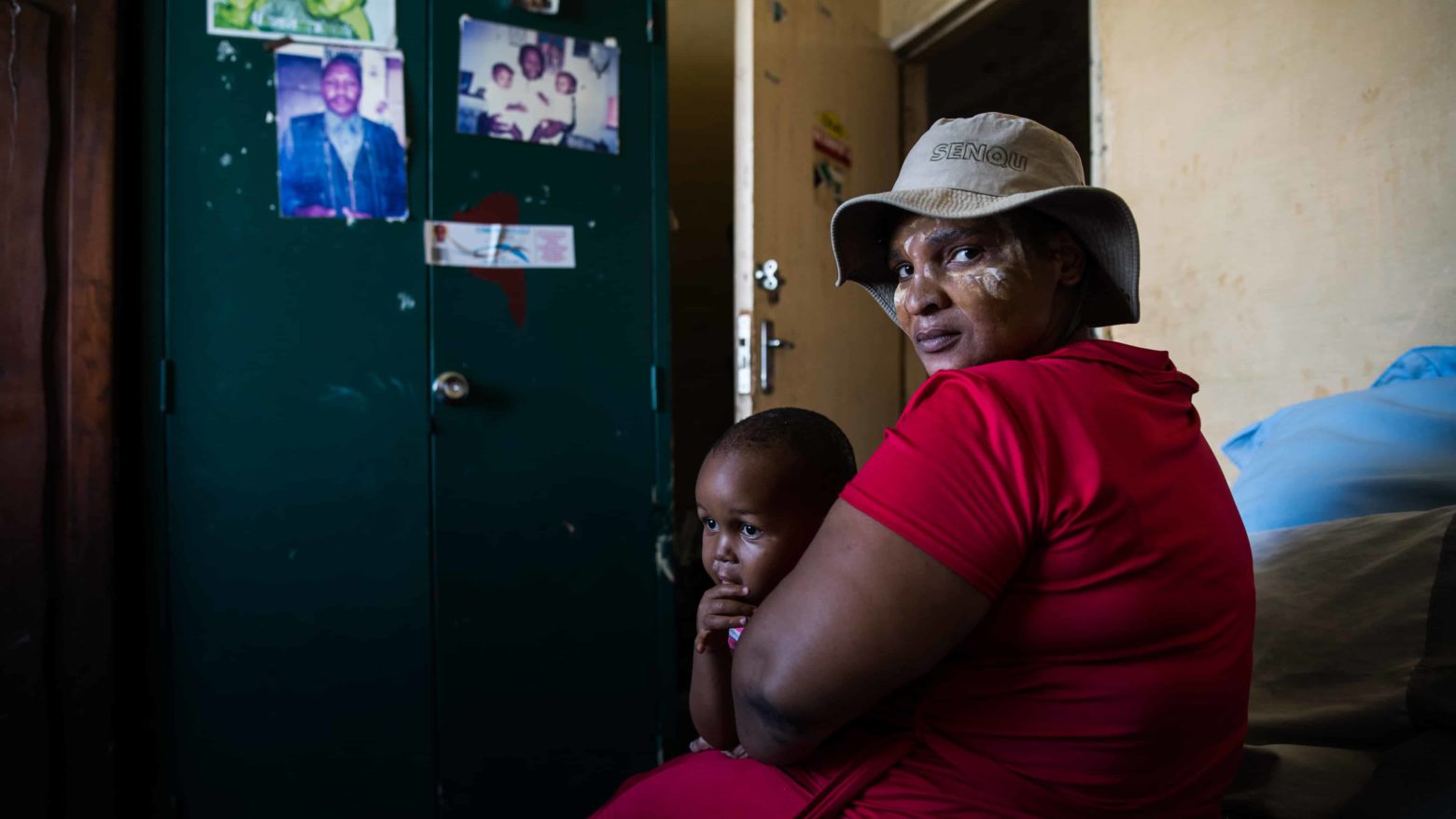
On an overcast late summer morning in March, I met Mamthina Pina, Themba’s wife, at her small, dank third-floor unit in Glebelands. She wore a bright red dress and had zinc smeared across her face to protect her skin from sun damage.
Pina pointed to pictures of her husband on the door of a closet in her bedroom, then pulled her phone out of her bra to show an image of his lifeless body as she found him when she was called to the scene by his boss. Blood had pooled on the pavement around the back of his head. Pina said that her husband had been receiving death threats over the phone for two days before the shooting; he’d also been hospitalized following a knife attack earlier in 2015.
Since the death of her husband, who was the sole breadwinner in the family, Pina had resorted to selling chips and vetkoeks—a type of stodgy savory donut—out of the kitchen of her home, which she shared with two of her children and two young grandchildren. With one of her grandchildren sitting on her lap, she told me she was struggling to support the family on her own.
“It’s very difficult, because my husband was the one who was looking after the kids and me,” she said. “I knew I had someone I could speak to whenever I felt that I had a problem.”
Pina, who is originally from the neighboring province of the Eastern Cape, moved to Glebelands to join her husband in 1996. She was among a wave of women and children to move into the formerly men-only complex in the years immediately after the end of apartheid.
Glebelands was one of a number of single-sex hostels built in the 1960s, as part of the apartheid government’s push to meet the labor needs of a rapidly industrializing city. Black migrant workers, many of them from the Eastern Cape, moved to Glebelands to work in Durban’s manufacturing and shipping industries.
In 1968, AWG Champion, a former regional ANC politician and celebrated racial equality activist, wrote to the Durban municipality about the dangers of assembling segregated hostels that were reminiscent of “military camps.” He warned that the frustrations caused by herding men together under “unnatural conditions” in hostel dormitories could create an open invitation to conflict.
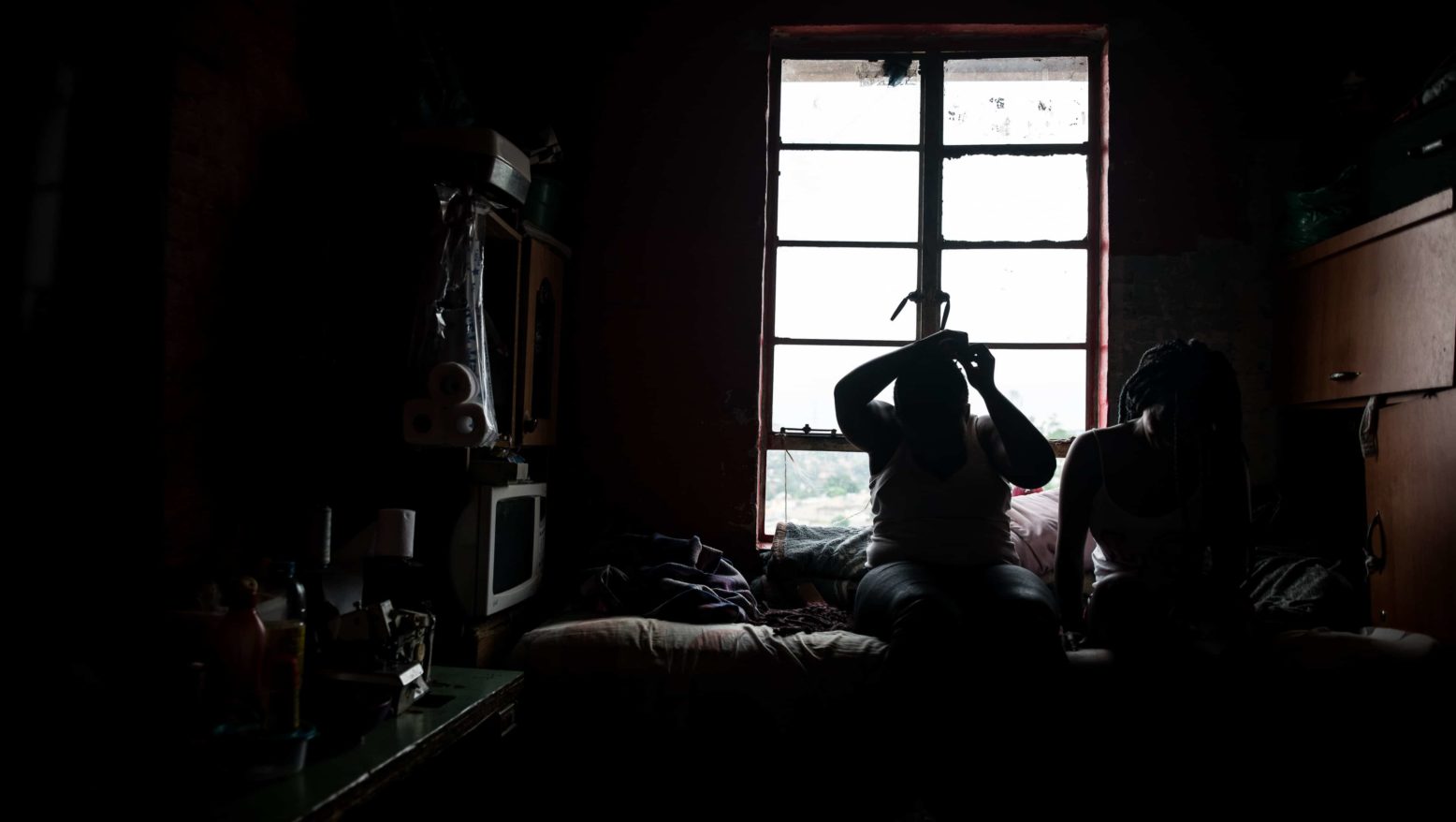
Post-apartheid, little has been done to improve conditions in Glebelands. Rampant poverty, a lack of basic services, and the legacy of structural violence that is woven into the fabric of hostel life continue to play a role in the high levels of violent crime. Among other things, this helps to provide an expendable supply of unemployed and disenfranchised young men, who can be lured into carrying out hits for as little as a few hundred dollars.
The fallout has often been as devastating for the families of the hitmen as it has been for their victims. Take the case of Nqobile Hlophe. Her brother Bongani, who has been linked to many of the killings in Glebelands, was gunned down in his room in Block 52 in October 2015. Another of Hlophe’s brothers, Wonderboy, was arrested along with six other alleged Glebelands hitmen in December 2017, and is currently awaiting trial. Sanele, a third Hlophe brother, was recently released from jail after three years.
“Our family has been through hell in the last three years,” Hlophe told me over the phone. “It’s been a very painful experience, having to deal with so much loss.”
The morning after Bongani’s death, Hlophe and her 70-year-old mother, who also lost her husband some years previously, travelled more than 150km from KwaDlangezwa to clean Bongani’s blood off the floor of his Glebelands unit. Sanele was arrested on various charges the same day. The two bereaved women were left to mourn alone.
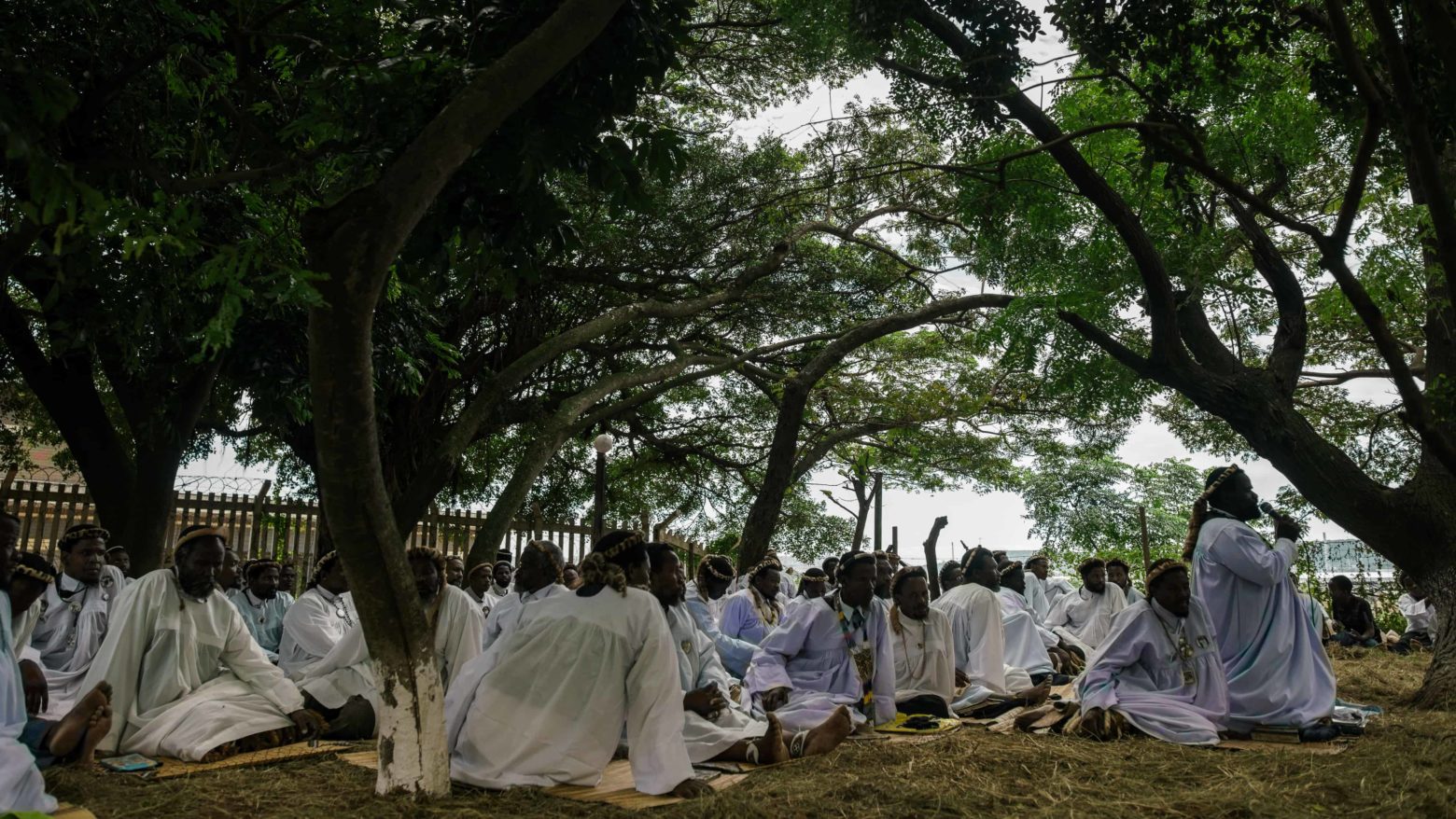
In 2016, South Africa’s Office of the Public Protector, an independent institution with a constitutional mandate to investigate improper conduct in state affairs, issued a report based on investigations into the violence at Glebelands. It concluded that Glebelands residents had been repeatedly failed by the local municipality, the Department of Social Development, and the police.
Police complicity in the violence at Glebelands was also discussed at length over the course of the public hearings at the Moerane Commission of Inquiry. Vanessa Burger, the independent activist, testified that police had tortured and intimidated a number of block committee members since 2014. A Glebelands-based police officer was also among the seven alleged hitmen arrested in December.
In March 2014, community leader Zinakile Fica died in police custody. An eyewitness claimed Fica had been tortured at Umlazi Police Station, which serves Glebelands. Burger says Fica’s death was not properly investigated, adding that there has been “high-level political interference” in all aspects of investigations into the violence at Glebelands.
South African Police Service (SAPS) officials and the National Prosecuting Authority (NPA) have repeatedly downplayed the alleged political nature of the violence in Glebelands. But Burger says that this is part of a concerted attempt to absolve the ANC government of anything that might tarnish its image ahead of the 2019 elections.
Even in murder cases where there is no direct political motive, Burger believes that local politics has allowed a “total lack of accountability, where the police operate with impunity and are being politically manipulated.”
“This has created a culture where political players can get away with murder. So the political conditions, the political culture and political environment, these have turned all of the murders into political issues,” she told me.
Many South African academics share Burger’s sentiment concerning collusion between the police and nefarious political players in KwaZulu-Natal. Veteran scholar of policing Bill Nixon, quoted in a recent book by South African criminologist Mark Shaw, succinctly encapsulates the politicized role of the police in marginalized communities like Glebelands:
“The police are more likely to police for a specific domination in the interests of a dominant class, race, or other social group in unequal, divided societies. This tendency will be particularly pronounced when the interests of that elite are…threatened by some form of insurrectionary action and when, at the institutional level, mechanisms for the democratic governance of the police are absent or fail to function effectively.”
But three police detectives from a special task force assigned to investigating political killings in KwaZulu-Natal, who spoke to me on condition of anonymity, seemed deeply saddened by the litany of accusations against them. They believed the public was too prone to tar all police officers with the same brush, and routinely failed to take into account the difficult circumstances under which they were forced to operate.
While conceding that prosecution rates for contract killings are woefully low across KwaZulu-Natal—and that this further fuels the violence—the officers claimed that their investigations were routinely hampered by the unwillingness of witnesses to come forward, even when offered witness protection.
“People are afraid. They know that they could also be eliminated if they give testimony,” one of the officers said.
The officers voiced fears for their own safety, too. “When you are working on political violence, you are always on the lookout. It’s a very risky business. Our families are very worried about us,” one of them told me. “Even you yourself, when you wake up in the morning, you don’t know whether you are going to come back home in the evening or not.”
Back in Umzimkhulu, almost ten months since Sindiso Magaqa’s death, Jabulile Msiya says that she is finally beginning to feel “normal” again. Towards the end of last year, after undergoing a few months of counseling, she was put on a course of antidepressants, which have helped to combat the despondency she says was consuming her.
Since then, despite the ongoing risks, she’s thrown herself back into her work at the municipality. “I’ve been working very hard. I’ve been doing my job very well,” she says while absent-mindedly running her finger up and down the side of a glass of water on the table in front of her.
Msiya has come to accept that there will likely be no justice for her friend Magaqa, nor for most of the other victims of recent political violence in KwaZulu-Natal. “It has taken too long now,” she says. “I don’t have confidence that any of the investigations will amount to anything.”
Msiya still worries about her safety, and more so, that of her children. But she says her family continues to support her political career.
“They are always praying for me. They say, ‘It’s God who put you in this position, so don’t allow your enemies to make you leave this job,’” she tells me. “Just continue. We will support you. We will be behind you.”
*Name changed to protect his identity.
Reporting for this story was supported by a Taco Kuiper grant from the Wits Journalism program, in South Africa.

